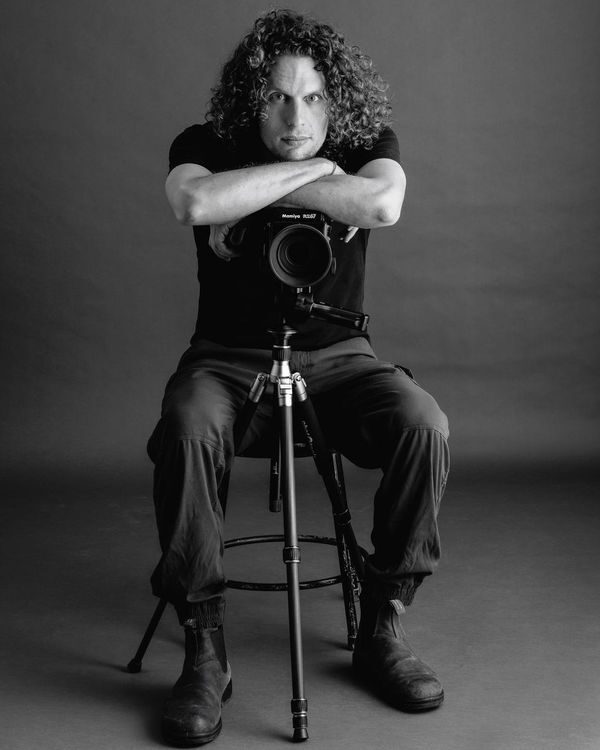
Behind the Lens with Tyson Banks
In a world oversaturated by digital photography, Tyson Banks stands out as a champion of timeless tradition. Banks has played with cameras most of his life, but it wasn’t until shooting film in a traditional darkroom class in college that he was officially hooked on film photography. For him, film photography is more than just a series of images. It’s about the act of noticing and the patience and passion it takes to truly capture the essence of the human spirit–what he’s coined ‘Heirloom Photography’. Hailing from Canada and raised a world traveler, Banks studied Cinematography at John Brown University. He then spent ten years working in the film industry in LA before making his return to NWA. Banks brings a nostalgic, artistic vision to every shot and graciously took the time to welcome us into a dialogue on his background and practice. Read up on our conversation below.
M: Tell us a bit about yourself. We heard you’re quite the traveler?
Tyson Banks: I’ve been a traveler my whole life. I was born in Canada and grew up living in Rwanda, Palau, and Papua New Guinea. I moved to NWA for college and then relocated to Los Angeles to work in the film industry. I’ve been to 36 countries and am always looking for cheap flights to add another stamp to my passport. My camera is my most important piece of travel gear, I take it everywhere and love taking photos of all the incredible places I’ve been.
M: What kind of camera do you like to use for your heirloom portraits?
TB:I shoot all my portraits with a Mamiya RZ67. I love this camera. The Mamiya RZ67 was the workhorse fashion and commercial camera in the 80s and 90s, used by photographers like Annie Leibovitz, and it’s still going strong today. It’s a 6x7cm negative, making it one of the largest medium format negatives. These negatives are huge and make incredible enlargements with exquisite detail. It also uses a leaf shutter, so I can sync flashes at all shutter speeds. It’s such a joy to use.
M: How were you first introduced to film?
TB: I have fond memories growing up of dropping off film from family vacations and the excitement of picking them up in anticipation of how the photos turned out. I didn’t really shoot film until I took a traditional darkroom class at John Brown University and I fell in love. There’s a magic and mystery to film of not knowing what you have until you develop it.
M: What do you most enjoy about the process of shooting with film?
TB: I love the intentionality that comes with shooting film. You’re forced to slow down and be more careful than with digital. I love that with my RZ67 I get 10 shots per roll of film. I can’t just burst fire the shutter and hope I got something. I’m a believer in quality over quantity. I don’t like having to go through hundreds of digital photos. Let’s shoot 10 or 20 shots, pick a couple of the best from those, print them, and hang them up. To me, that’s more meaningful than an online gallery of dozens of selects from a shoot that you’ll never look at. I call my process “Heirloom Photography.” To me, film has a timeless nostalgia that renders the human face in such a natural and organic way. Every step of the process is done by hand, no computers are used, and the result is a physical print that can become an heirloom.
M: You develop in your own darkroom. How long does the process take?
TB: Everything I shoot I develop and then print by hand. Developing a roll of film takes about 45 minutes, from loading it into the tank, to hanging it up to dry. I find it very zen. You have to be completely present with what you’re doing. If your mind wanders or you default to muscle memory, you could skip a step, or measure something wrong. I’ve made so many mistakes in this journey, and I seem to keep discovering new mistakes to make. It’s all a learning process though and I try not to make the same mistake twice!
M: Creative references and inspirations?
TB: My lighting style is heavily influenced by the Dutch Masters. I love the look of a single key light and the resulting chiaroscuro–an Italian term which literally means ‘light-dark most commonly famed by artists like Leonardo da Vinci. My modern influences are Bryan Schutmaat, Ivan Weiss, and Andrew Kilgore. They are all so good at evoking a very real humanness in their subjects, and their lighting is always stunning.
M: What was your takeaway from speaking with the regional artists who are being featured in the upcoming Design show?
TB: It was so fun chatting with all the artists in this project. I just love talking to creative people. Each one was so interesting and had great stories. We only had a short window to photograph each artist, but I could have spent hours talking. Seeing so much talent at once makes me proud and excited to live in NWA. There’s such an incredible pool of talented and creative people here, and it was a real privilege getting to photograph so many artists.
I have fond memories growing up of dropping off film from family vacations and the excitement of picking them up in anticipation of how the photos turned out. There’s a magic and mystery to film of not knowing what you have until you develop it.
TYSON BANKS
Special thank you to Tyson Banks for sharing his practice with us! You can learn even more about him HERE.
Article Credits
Artist Portrait by Joshua LeMasters; Words by Claire Ward